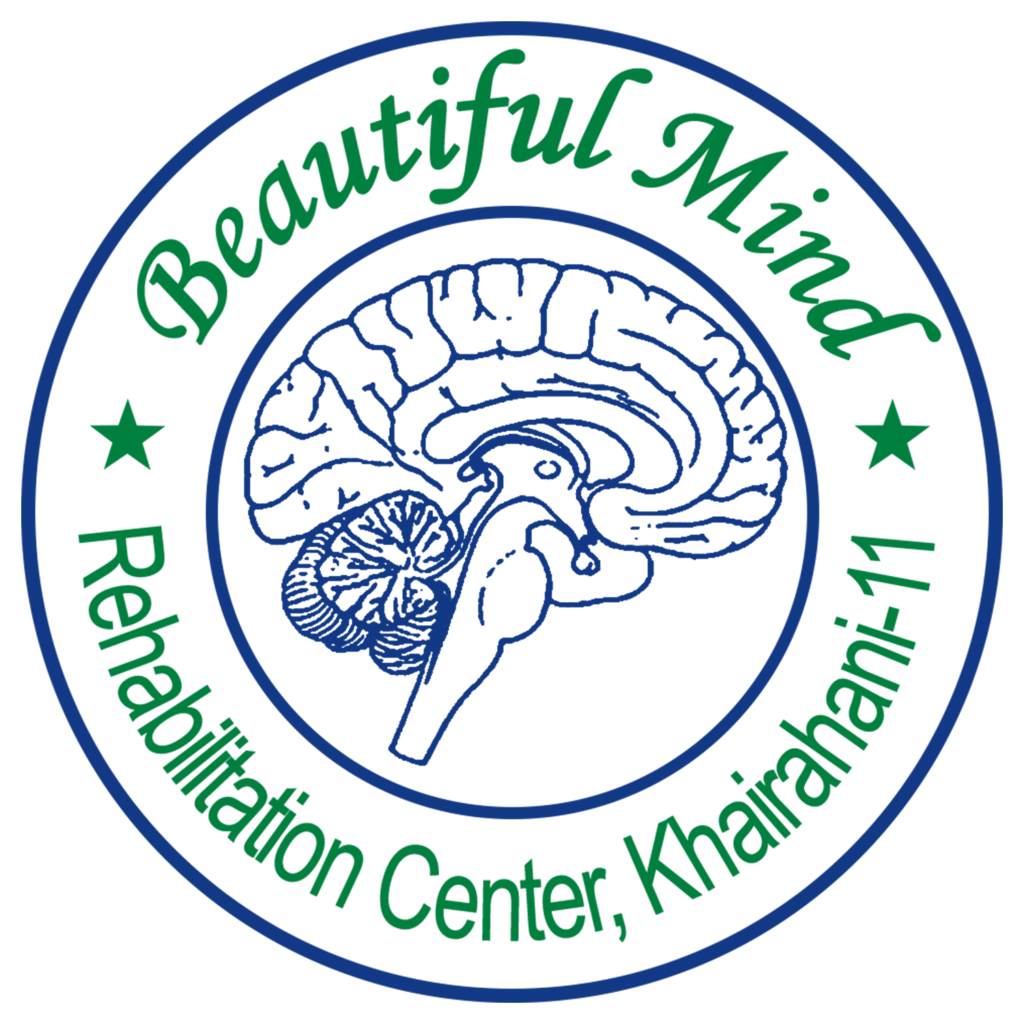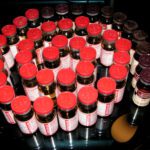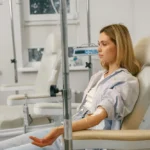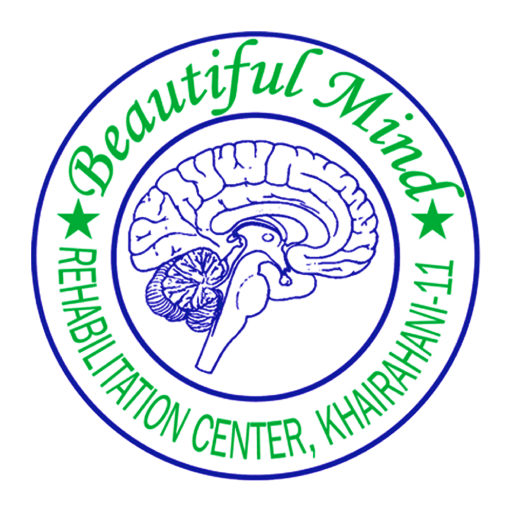Ketamine Treatment in Nepal: A Breakthrough for Depression and PTSD
By Beautiful Mind Institute of Psychiatry — Khaireni-11, Gaidaha, Parsa, Chitwan, Nepal
A new door opens when others feel shut | Ketamine Treatment in Nepal
Ketamine Treatment in Nepal: If you’ve tried “everything” for depression or PTSD and still feel stuck, you’re not alone. Many people in Nepal spend years cycling through medications, therapy, and home remedies—improving a little, relapsing again, and losing hope along the way. Ketamine-assisted treatment is changing that narrative worldwide, and Nepal is beginning to benefit too. At Beautiful Mind Institute of Psychiatry, we offer a carefully designed, evidence-informed ketamine care pathway that puts safety, dignity, and whole-person healing first.
This guide explains what ketamine treatment is (and isn’t), how it works, who it helps, the experience session-by-session, expected outcomes, side effects, integration therapy, and how families can support loved ones. We’ll speak plainly, avoid hype, and center your lived experience—because mental health recovery should feel human, not mechanical.
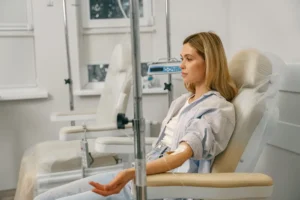
What is ketamine-assisted treatment?
Ketamine is an anesthetic discovered in the 1960s. In the last two decades, low-dose ketamine has shown rapid antidepressant and anti-suicidal effects in many people with treatment-resistant depression (TRD) and post-traumatic stress disorder (PTSD). It’s not a magic pill; it’s a therapeutic catalyst. Used in a structured program with medical monitoring and psychotherapy, ketamine can help the brain become more flexible and receptive to change—so therapy “lands” better and relief comes sooner.
Key uses in mental health:
- Treatment-resistant major depressive disorder
- Persistent suicidal thoughts (acute risk management)
- PTSD (including trauma related to disasters, conflict, or violence)
- Certain anxiety syndromes and complex grief (on a case-by-case basis)
What it is not: a daily home medication, a party drug, or a cure-all. Clinical ketamine is administered in a controlled medical setting by trained professionals with strict screening, dosing, and follow-up.
Why ketamine matters in Nepal’s context
- Rising burden, limited relief: Many Nepali patients have already tried multiple antidepressants or trauma therapies without lasting benefit. Ketamine can act quickly—often within hours to days—offering short-term relief that helps patients re-engage in life and therapy.
- Trauma exposure: Earthquakes, migration stress, domestic and community violence, and economic instability mean trauma is common. Ketamine’s ability to reduce hyperarousal and “stuck” traumatic memory loops can be uniquely helpful when paired with skilled psychotherapy.
- Access & adherence challenges: Long waiting lists, travel costs, and medication side effects often derail care. Ketamine protocols are time-limited, structured, and can deliver meaningful change in a shorter window—useful for patients traveling from outside Chitwan or other provinces.
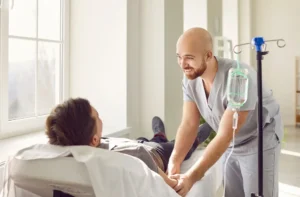
How ketamine works (in simple language)
Think of depression and PTSD as patterns the brain keeps repeating—like being trapped in a narrow trail worn into a hillside. Ketamine briefly widens the path by acting on glutamate and NMDA receptors, rapidly increasing synaptic plasticity (the brain’s ability to form new connections). That “window of plasticity” allows new learning, perspective shifts, and emotional processing. When you pair that with integration therapy, healthier patterns can form and stick.
What patients often report:
- A sense of emotional “unfreezing” or relief from heaviness
- Reduced suicidal ideation
- Greater openness to therapy and insight
- Improved sleep and appetite in the short term
- A quieter “background noise” of anxiety or hypervigilance (PTSD)
Safety first: who is (and isn’t) a candidate?
Good candidates may include people who:
- Have moderate-to-severe depression or PTSD not responding to standard treatments
- Struggle with intrusive thoughts or suicidal ideation (with proper safety planning)
- Can commit to medical screening, monitored sessions, and integration therapy
- Have family/support persons who can help with transport and post-session rest
We avoid or proceed with extreme caution if there’s:
- Uncontrolled hypertension or significant cardiovascular disease
- Certain neurological conditions or increased intracranial pressure
- Current psychosis or untreated manic episodes
- Severe substance use disorders without stabilization
- Pregnancy or breastfeeding (risk–benefit assessed by the medical team)
Important: A full psychiatric and medical evaluation is mandatory. Your safety, dignity, and consent lead the process.

The Beautiful Mind ketamine pathway: step-by-step
1) Comprehensive evaluation
- Psychiatric assessment (diagnosis, history, risk assessment)
- Medical screening (vitals, labs as indicated, medications review)
- Shared decision-making: we discuss benefits, risks, alternatives, costs, and logistics
2) Preparation & set-setting
- Orientation session: what to expect, how to breathe, grounding skills
- Clarify intentions (e.g., “ease the grip of traumatic memories” or “reduce suicidal thoughts”)
- Practical planning: transportation, a calm evening afterward, and a support person if possible
3) Dosing & monitoring
- Route: Often IV infusion or IM injection; low-dose, sub-anesthetic
- Duration: 40–60 minutes for the active phase; total clinic time ~2–3 hours
- Monitoring: Continuous vitals, medical supervision, comfort care (eye mask, gentle music)
- Experience: May include altered perception, dissociation, or vivid imagery; this is expected and time-limited
4) Integration therapy (the secret sauce)
- Within 24–72 hours, you meet your therapist to make meaning of the experience
- We connect insights to concrete coping plans, trauma processing, and behavioral changes
- Integration is where relief consolidates into sustainable change
5) Series & taper
- Typical induction: 6–8 sessions over 3–4 weeks (individualized)
- Reassessment after induction; maintenance or booster sessions only if clinically justified
- Continuous tracking of mood, sleep, functioning, and safety
What a session feels like (patients’ common experiences)
- Onset (first 10–15 min): Lightness, warmth, or gentle detachment from everyday worries
- Peak (20–40 min): Altered sense of time/space; memories or images may surface; emotions can shift quickly (both uplifting and tender)
- Landing (final 20–30 min): Return to baseline awareness; body may feel tired but relaxed
- Aftercare (same day): No driving, no major decisions; hydrate, rest, journal, or draw
Many people describe a softening of rigid thoughts and a feeling that “there’s room to breathe again.” Others have a more neutral experience but still note improved mood and reduced reactivity over the next 24–72 hours.
Benefits you can reasonably expect
- Rapid symptom relief: Often within hours to days for many (not all) patients
- Reduced suicidal ideation: A critical bridge while longer-term therapies work
- Improved therapy engagement: The brain’s plasticity window helps therapy stick
- Functional gains: Better sleep, appetite, social engagement, and motivation
- Trauma processing support: Less intensification with reminders; more capacity to work through memories with a therapist
We do not promise cures. We do aim for meaningful, measurable improvements that change daily life.
Risks, side effects, and how we manage them
Common, short-lived effects (usually fade within 2 hours):
- Nausea, lightheadedness, mild blood pressure rise
- Dissociation (feeling detached) or perceptual changes
- Fatigue or headache after the session
Less common concerns (we screen carefully):
- Anxiety during the peak (we coach grounding; clinician present at all times)
- Blood pressure spikes (we monitor and treat as needed)
- Misuse risk outside medical settings (we do not dispense take-home ketamine)
You’ll have a written aftercare plan, an emergency contact, and a clear follow-up schedule.
Why integration therapy is non-negotiable
Ketamine opens a door; integration helps you walk through it. Without integration, gains can fade. With it, people often translate insights into healthier habits, boundaries, and trauma processing. We use approaches like CBT, trauma-informed therapy, acceptance and commitment therapy (ACT), and mindfulness-based strategies to “lock in” the neuroplastic window.
Integration may include:
- Journaling prompts about emotions and values
- Somatic grounding (breath work, gentle movement, yoga)
- Exposure and memory reconsolidation for PTSD (timed and titrated)
- Family sessions to align home support with your goals
Combining ketamine with current medications
- Many antidepressants and mood stabilizers can continue safely; we’ll review your regimen.
- Certain medications (e.g., benzodiazepines at high doses) may blunt ketamine’s effect; we’ll plan accordingly.
- Never start/stop medications on your own—always consult our team.
Expected timeline: from first contact to measurable change
- Week 0: Intake, medical clearance, preparation session
- Weeks 1–4: 6–8 sessions + integration therapy (2–3 integration visits)
- Week 5+: Reassessment; boosters only if clinically indicated
- Months 2–6: Ongoing psychotherapy and rehabilitation supports; lifestyle and relapse-prevention plan
Many patients notice a step-change in mood or reactivity by session 2–4. For PTSD, improvements in sleep, nightmares, and startle response may appear early, with deeper trauma work unfolding during integration.
Cost, access, and practicalities (Nepal context)
- Pricing varies by route (IV vs IM), monitoring needs, and total sessions; we discuss transparent packages during intake.
- We help with travel planning and scheduling to minimize time off work/school.
- We provide tele-integration options for those returning to their home districts.
- Insurance coverage is limited in Nepal; we offer staged payment options where possible.
Family & caregiver guidance
Your loved one might seem “different” right after a session—more reflective, tired, or tender. This is normal. How to help:
- Create a calm environment post-session (quiet evening, light food, no big decisions)
- Encourage journaling or a gentle walk
- Attend family sessions; learn supportive language and boundaries
- Celebrate small wins: getting out of bed, responding to messages, a single good night’s sleep—these are milestones
Ethical safeguards you should expect from any provider
- Qualified psychiatric oversight and trained medical staff on site
- Informed consent (benefits, risks, alternatives, costs)
- Medical screening and vitals monitoring during sessions
- No take-home ketamine; no pressure sales for unnecessary boosters
- Integrated psychotherapy; not “ketamine only”
- Clear referral pathways if ketamine isn’t appropriate
If a clinic can’t provide the above, consider it a red flag.
Who should consider alternative options?
- Individuals with primarily situational sadness that improves with simple supports
- Those with active psychosis or mania (unless stabilized)
- People seeking a “quick fix” without therapy—ketamine is most helpful when paired with behavioral change and integration
We also offer non-ketamine care: medication optimization, psychotherapy, occupational therapy, addiction treatment, family therapy, and rehabilitation.
Lived stories (composite vignettes to protect privacy)
- R., 28, earthquake survivor (PTSD): Nightmares and hypervigilance persisted despite therapy. After 6 ketamine sessions plus trauma-focused integration, R. reported fewer nightmares, less startle reflex, and the first sense of safety in years.
- S., 41, teacher with TRD: After trying four antidepressants, S. completed an 8-session series. Results: improved sleep, “mental room to breathe,” and returned to work with a maintenance psychotherapy plan (no booster yet).
- B., 33, suicidality: Entered care with daily intrusive self-harm thoughts. After induction + safety planning + family sessions, intensity dropped significantly; B. describes therapy as “finally working.”
Outcomes vary; what’s consistent is our commitment to personalized, trauma-informed care.
Frequently asked questions (quick answers)
Will I hallucinate?
You may experience altered perceptions or imagery. This is typically gentle, time-limited, and supported by your clinician.
How quickly will I feel better?
Some feel relief within hours; many within a few days. Full benefit often unfolds across the series plus integration.
Is ketamine addictive?
In medical settings with no take-home supply, misuse risk is low. We screen for substance risks and monitor closely.
Can I drive afterward?
No. Arrange a ride and keep the evening free.
What if I’m scared?
It’s normal to be nervous. You’ll never be alone during a session. Grounding and reassurance are part of the care.
The Beautiful Mind difference: holistic psychiatry, Nepali heart
- Biopsychosocial-spiritual model: We treat symptoms and the person—biology, stories, culture, relationships, purpose.
- Occupational therapy & rehabilitation: Build daily structure, skills, and self-efficacy alongside medical care.
- Family-inclusive approach: Healing becomes durable when homes become healing spaces.
- Continuum of care: From first call to follow-up months later, we stay with you.
Our goal isn’t just symptom reduction. It’s restoring connection, rekindling meaning, and helping you reclaim your life.
How to get started (next steps)
- Call us to book an evaluation.
- Bring your treatment history (medication lists, therapy notes if available).
- Ask every question. Curiosity is a strength.
- Decide together whether ketamine is right for you—or if another pathway suits you better.
A gentle, firm reminder
Ketamine treatment should always be medically supervised. It is not safe to self-administer or source outside a clinical setting. If you’re in acute crisis or thinking about self-harm, seek emergency help immediately.
Ready when you are
If you sense a small flicker of “maybe”—that’s enough to begin a conversation. Whether ketamine is right for you or not, we’ll help you find the safest, most compassionate path forward.
Beautiful Mind Institute of Psychiatry
📍 Khaireni-11, Gaidaha, Parsa, Chitwan, Nepal
📞 +977-98550945843 (Hira Ale Magar) | +977-9855094582 (Ansuda Poudel) | +977-9855094584 (Kamal Sharma Bhusal)
🌐 https://beautifulmind.com.np/
FAQs – Ketamine Treatment in Nepal
1. What is Ketamine treatment?
Ketamine treatment is a medical therapy using controlled doses of ketamine—traditionally an anesthetic—to help manage depression, PTSD, anxiety, and certain chronic pain conditions. At Beautiful Mind Institute of Psychiatry, we use it under strict medical supervision for mental health recovery.
2. How does Ketamine help with depression?
Ketamine works differently from traditional antidepressants. It targets glutamate pathways in the brain, helping to rewire connections and improve mood rapidly—often within hours to days, instead of weeks.
3. Is Ketamine treatment available in Nepal?
Yes. Beautiful Mind Institute of Psychiatry in Chitwan, Nepal, is one of the few centers offering safe, professional, and evidence-based ketamine therapy for mental health conditions.
4. Who can benefit from Ketamine therapy?
People with treatment-resistant depression, PTSD, chronic anxiety, and suicidal thoughts who haven’t found relief from other treatments may benefit from ketamine therapy.
5. Is Ketamine safe?
When administered in a clinical setting by trained professionals, ketamine is safe. Side effects are usually mild and temporary.
6. How quickly does Ketamine work?
Many patients experience noticeable improvements in mood and symptoms within hours to a few days after the first session.
7. Does Ketamine cure depression or PTSD permanently?
Ketamine is not a permanent cure but can offer rapid relief and open a window for deeper psychotherapy and lifestyle changes that support long-term recovery.
8. How is Ketamine administered?
At Beautiful Mind Institute, ketamine is administered via intravenous (IV) infusion, intranasal spray, or lozenge, depending on the patient’s needs.
9. How long does a Ketamine session last?
A typical session lasts about 40 minutes to 1 hour, followed by a short observation period to ensure safety.
10. How many sessions will I need?
Most protocols recommend 6–8 initial sessions over 2–4 weeks, followed by maintenance sessions as needed.
11. Can Ketamine help with suicidal thoughts?
Yes. Research shows ketamine can rapidly reduce suicidal ideation, often within hours, making it a valuable option for crisis intervention.
12. What conditions can Ketamine treat?
Depression, PTSD, chronic anxiety, OCD, certain types of chronic pain, and bipolar depression (under careful supervision).
13. Will Ketamine make me high?
Ketamine can cause temporary changes in perception during treatment, but these effects fade quickly and are not the same as recreational misuse.
14. Is Ketamine treatment addictive?
When used under medical supervision for mental health purposes, ketamine is not addictive. Strict protocols prevent misuse.
15. How do I prepare for Ketamine therapy?
We recommend eating a light meal a few hours before, wearing comfortable clothes, and discussing any medications with our doctors beforehand.
16. Can I drive after a Ketamine session?
No. You should arrange for someone to take you home as your coordination and alertness may be affected for a few hours.
17. What are the possible side effects?
Mild nausea, dizziness, blurred vision, or dissociation may occur but usually resolve within an hour.
18. Is Ketamine therapy legal in Nepal?
Yes, ketamine therapy for medical purposes is legal in Nepal when prescribed and administered by licensed professionals.
19. What makes Beautiful Mind’s approach unique?
We combine ketamine therapy with holistic mental health care, including psychotherapy, mindfulness training, and lifestyle guidance.
20. How much does Ketamine treatment cost in Nepal?
Costs vary depending on the number of sessions and treatment plan. We provide a detailed cost breakdown after the initial assessment.
21. Will insurance cover Ketamine therapy in Nepal?
Most insurance plans in Nepal currently do not cover ketamine therapy, but we can assist with medical documentation.
22. Is there an age limit for Ketamine therapy?
Typically, patients must be 18 or older. Special cases for younger patients are evaluated individually.
23. Can pregnant or breastfeeding women have Ketamine treatment?
Ketamine is generally not recommended during pregnancy or breastfeeding due to limited research on safety in these conditions.
24. Can Ketamine be combined with other treatments?
Yes. In fact, combining ketamine with talk therapy, medication, and lifestyle changes often yields the best results.
25. How long do the benefits last?
Relief can last days to months. Maintenance sessions and ongoing therapy help sustain improvements.
26. What should I expect during my first session?
You’ll meet with our medical team, receive a comfortable treatment space, and be monitored closely throughout the session.
27. Will I be conscious during treatment?
Yes. You will remain awake, though you may feel deeply relaxed or experience dream-like sensations.
28. How do I know if I’m eligible for Ketamine therapy?
We conduct a thorough mental and physical health evaluation to ensure ketamine is a safe and appropriate choice for you.
29. Can Ketamine help with anxiety disorders?
Yes. Many patients with generalized anxiety disorder or social anxiety find relief with ketamine therapy.
30. Is Ketamine therapy a replacement for antidepressants?
Not necessarily—it can complement antidepressants or offer an alternative when they are ineffective.
31. What happens after the initial treatment series?
Some patients need periodic “booster” sessions. We also provide aftercare plans for sustained well-being.
32. Can I stop other medications before Ketamine therapy?
Never stop medications without consulting your doctor. We coordinate care with your existing treatment plan.
33. Is there a risk of bad experiences during Ketamine sessions?
Some people may experience mild anxiety or discomfort, but our team provides reassurance and guidance to keep you safe.
34. How can I book a Ketamine consultation at Beautiful Mind?
You can call us directly, visit our center, or book online via our official website: https://beautifulmind.com.np.
35. Where is Beautiful Mind Institute of Psychiatry located?
📍 Khaireni-11, Gaidaha, Parsa, Chitwan, Nepal
📞 +977-98550945843 (Hira Ale Magar)
📞 +977-9855094582 (Ansuda Poudel)
📞 +977-9855094584 (Kamal Sharma Bhusal)
🌐 https://beautifulmind.com.np
📍 Visit Us: Khaireni-11, Gaidaha, Parsa, Chitwan, Nepal
📞 Call Us:
+977-98550945843 (Hira Ale Magar)
+977-9855094582 (Ansuda Poudel)
+977-9855094584 (Kamal Sharma Bhusal)
🌐 Website: https://beautifulmind.com.np
